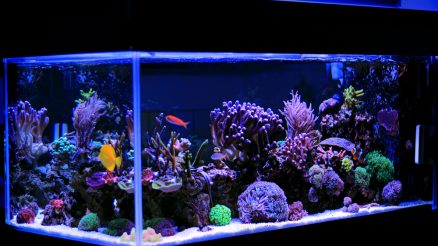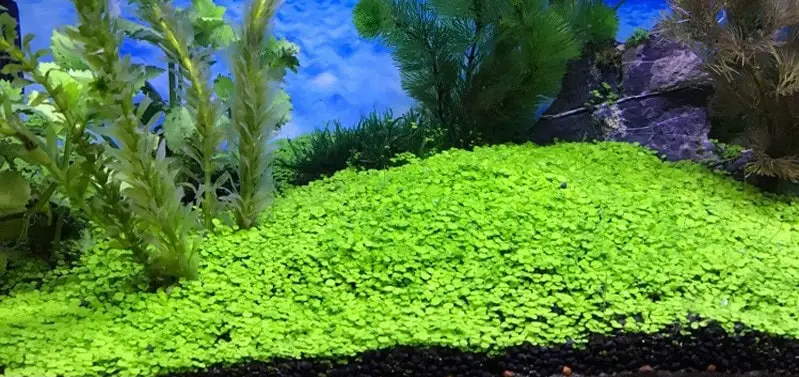Fish Tank Acrylic Sheet: Guide To Build An Acrylic Fish Tank
Should you be contemplating the creation of an aquarium, consider employing acrylic sheets for your build. Acrylic, often referred to as plexiglass, is a plastic material known for its light weight, durability, and superior clarity. Diverging from the conventional glass aquariums, acrylic sheets provide an unparalleled blend of aesthetics and functionality, making them a top pick for your upcoming DIY fish tank venture. These sheets are available in various sizes, thicknesses, and colors, enabling you to tailor your aquarium to your specific preferences in size and style. Opt for cast acrylic sheets for enhanced impact resistance and clearer visibility compared to extruded varieties. This article will explore multiple methods for utilizing acrylic sheets in aquarium construction, including cutting the acrylic to necessary dimensions, bonding two sheets seamlessly, and maintaining the cleanliness of the tank. Additionally, we’ll delve into the optimal thickness for acrylic sheets, strategies for scratch prevention, and measures to prevent leaks.
Advantages Of Acrylic Sheets Over Glass Sheets For Fish Tanks
Acrylic sheets have several advantages over glass sheets for fish tanks. Acrylic is a dimensionally stable material, which means it is less likely to crack or shatter compared to glass. Acrylic sheets are manufactured in a process called cell casting, which produces sheets with superior optical clarity and precision. Acrylic sheets can be easily cut to size using basic tools and bonded together using acrylic cement or adhesive, making them an ideal material for DIY fish tanks. Acrylic sheets are sturdy and can withstand the weight of large fish. Acrylic sheets that are 2 to 3 times thicker than glass, are more durable and less likely to shatter. Acrylic sheets are also cost-effective and offer crystal-clear visibility. Acrylic sheets take only hours to dry and can be cleaned easily with a cleaner and sandpaper, making them an ideal choice for your next fish tank aquarium project.
Understanding The Different Types Of Acrylic Sheets For Aquariums
When it comes to building an aquarium, selecting the right type of material is critical. Acrylic panels are becoming increasingly popular due to their durability, crystal-clear clarity, and waterproof nature. Acrylic sheets for aquariums are available in various sizes and thicknesses. Some suppliers offer pre-cut or cut to size acrylic sheets, making it easier for aquarium builders to get the right dimensions for their tanks. When selecting the thickness of acrylic sheet for an aquarium, a general rule of thumb is that for every inch of desired tank dimension, a thickness of 1/4 inch is needed.
Factors To Consider When Designing Your Custom Fish Tank
When designing a custom fish tank, several factors need to be considered to ensure the success of the project. The size of the fish and desired fish tank dimensions should be determined to select the right size of sheets of acrylic or cell cast acrylic sheet. Manufacturers in China can provide custom sizes, and some even offer OEM services. A protective film should be used during fabrication to protect the crystal-clear finish. To avoid scratches during cutting, use masking tape and a fine grit, and consider the weight of the water and curve of the tank. Choose the material you want for your next project, making it easy to maintain and fitting the desired specifications.
Choosing The Right Acrylic Sheet Thickness
Choosing the right acrylic sheet thickness is essential when working on a project that requires the material. When determining the appropriate thickness for an acrylic sheet, it is recommended to consider the weight of glass, as well as the crystal-clear finish. For every inch of the desired dimension, a thickness of 1/4 inch is recommended. Manufacturers can send us custom sizes, making it easier to choose the right thickness for the project. Ultimately, selecting the proper thickness will ensure the material’s durability and long-lasting performance.
Cutting And Bonding And Customizing Your Acrylic Sheets
Cutting, bonding, and customizing acrylic sheets are crucial steps to ensure a successful project. When cutting acrylic sheets, it is essential to use the proper tools and techniques to avoid cracks or chips. Bonding acrylic sheets can be done through different methods, such as solvent welding or adhesive bonding. Customizing acrylic sheets, on the other hand, can be achieved through various techniques, including laser cutting or etching. By utilizing these processes, acrylic sheets can be transformed into unique and functional pieces for any project.
Acrylite® – The Best Acrylic Sheet For Your Aquarium
Acrylite® is the best acrylic sheet choice for aquariums due to its superior quality and durability. It offers excellent optical clarity, is lightweight, and is 17 times stronger than traditional glass, making it a safer option for aquariums. Acrylite® is also resistant to scratching and UV radiation, ensuring the long-term clarity of the acrylic sheet. Additionally, it is easy to clean and maintain, making it an ideal choice for aquarium enthusiasts looking to build a long-lasting and visually stunning aquarium.
Maintenance Tips For Your Acrylic Aquarium
Maintaining an acrylic aquarium is crucial to ensure the health of its inhabitants and the longevity of the aquarium itself. Regularly cleaning the aquarium walls and substrate is essential to prevent the buildup of algae and other harmful substances. It is also important to avoid using abrasive cleaning tools and chemicals that can damage the acrylic sheet. Additionally, frequent water changes and regular filter maintenance are necessary to keep the water quality at its best. By following these maintenance tips, aquarium enthusiasts can enjoy a beautiful and healthy aquarium for years to come.
Conclusion
In the end it is concluded that, acrylic sheets are an excellent alternative to traditional glass for building fish tanks and aquariums. Their lightweight, crystal clear finish, and superior strength make them an ideal material for creating custom fish tanks. Cell cast acrylic sheet and Acrylite® are two excellent options for building aquariums due to their durability, optical clarity, and ease of maintenance. When designing and customizing acrylic sheets for aquariums, it is crucial to consider factors such as the size of the fish, weight of the water, and appropriate thickness. Regular maintenance, such as cleaning and filter maintenance, is also crucial to ensure the longevity of the aquarium. By following these tips, aquarium enthusiasts can create a beautiful and functional aquatic environment for their fish to thrive in.
Frequently Asked Questions (FAQs)
If you’ve still got questions about fish tank acrylic sheets, then these may help:
Is Acrylic Sheet Good For Aquarium?
Yes, acrylic sheets are an excellent choice for aquariums due to their durability, strength, and crystal-clear finish. They are lighter and more impact-resistant than traditional glass, making them a safer option for aquariums. Acrylic sheets offer excellent optical clarity, making them ideal for creating a beautiful and vibrant aquatic environment.
What Kind Of Acrylic Is Used For Fish Tanks?
Cell cast acrylic sheet and Acrylite® are two types of acrylic commonly used for fish tanks due to their durability, optical clarity, and ease of maintenance. These types of acrylic are stronger and more impact-resistant than traditional glass, making them a safer option for fish tanks. They offer superior optical clarity, allowing for a clear and vibrant underwater viewing experience.
How Thick Does Acrylic Need To Be For An Aquarium?
The thickness of acrylic needed for an aquarium depends on several factors, including the size of the tank and the weight of the water. As a general rule of thumb, the acrylic sheet should be at least 1 inch thick for small aquariums, while larger aquariums may require thicker sheets. It is essential to consult with a supplier or manufacturer to determine the appropriate thickness for your specific aquarium needs.
Can Acrylic Tanks Break?
While acrylic tanks are less likely to break than traditional glass tanks, they can still crack or break if exposed to extreme pressure or impact. However, acrylic is more impact-resistant and less brittle than glass, making it a safer option for aquariums. It is crucial to handle and maintain acrylic tanks carefully and avoid exposing them to excessive pressure or impact to prevent damage or breakage.
Is Acrylic Better Than Glass?
Acrylic is a popular alternative to glass due to its superior strength, impact resistance, and optical clarity. Acrylic is more durable and less brittle than glass, making it a safer option for aquariums, and it also offers superior optical clarity, allowing for a clear and vibrant underwater viewing experience. Additionally, acrylic is lighter in weight than glass, making it easier to handle and install.





